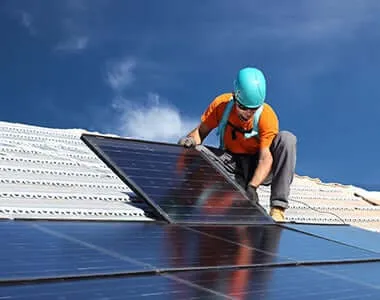Comparing Solar String Inverters and Central Inverters for Efficient Energy Solutions
Solar String Inverters vs. Central Inverters A Comparative Analysis
In the realm of solar energy systems, the choice of inverter plays a crucial role in determining the efficiency and overall performance of a solar power installation. The two primary types of inverters utilized are string inverters and central inverters, each having its set of characteristics, advantages, and disadvantages. Understanding the distinctions between these two technologies can help homeowners and businesses make informed decisions to maximize their solar energy investment.
What Are String Inverters?
String inverters are the most common type of inverter used in residential solar energy systems. They function by connecting a series of solar panels — or strings — in parallel to a single inverter. The inverter converts the direct current (DC) generated by the panels into alternating current (AC) for use in homes or businesses. One of the defining features of string inverters is their scalability, allowing for easy system expansion by adding more panels and strings as needed.
Advantages of String Inverters
1. Cost-Effectiveness String inverters are generally less expensive than central inverters and are often the preferred choice for residential installations due to their lower upfront costs.
2. Simplicity and Ease of Installation The installation process is straightforward, making it accessible for installers and homeowners alike. Fewer components mean a quicker setup time.
3. Improved Monitoring Many string inverters come with integrated monitoring capabilities, allowing users to track the performance of individual panels. This feature can aid in identifying faults or performance issues promptly.
4. Flexibility String inverters can be easily integrated into a variety of system configurations, making them suitable for different roof types and structures.
Disadvantages of String Inverters
1. Shading Limitations If one panel in a string is shaded or underperforming, it can significantly impact the entire string's production. This “one bad apple” scenario can reduce overall energy yields.
2. Potential for Higher Losses In installations with multiple strings, there’s a risk of energy production loss due to mismatched panels. Variations in performance can cause inefficiencies.
What Are Central Inverters?
solar string inverter vs central inverter

Central inverters are typically used in large-scale solar installations, such as solar farms or commercial setups. They operate by managing multiple strings of panels and converting their collective DC output into AC power. Central inverters are designed to handle larger volumes of power and are most effective in environments where uniform solar irradiance can be expected.
Advantages of Central Inverters
1. Higher Efficiency Central inverters often feature advanced optimization technologies and can achieve better efficiencies compared to string inverters, especially in large systems.
2. Scalability for Large Installations They are ideal for large-scale solar projects because they can efficiently manage a high number of panels, reducing the need for multiple smaller inverters.
3. Reduced Maintenance With fewer devices to maintain, central inverters can simplify the management of large solar installations and reduce maintenance costs.
Disadvantages of Central Inverters
1. Higher Initial Investment The upfront cost of central inverters is typically higher than that of string inverters, which can be a deterrent for smaller installations.
2. Limited Monitoring Capabilities Unlike many string inverters that provide detailed monitoring at the panel level, central inverters often offer broader performance metrics which may obscure individual panel issues.
3. Failure Impact A failure in a central inverter may lead to a complete halt in energy production of the connected panels, resulting in potential revenue loss until repairs are completed.
Conclusion
The decision between solar string inverters and central inverters ultimately depends on the specific needs of the solar energy installation. For residential setups and small-scale projects, string inverters generally offer a better balance of cost, performance, and ease of use. In contrast, central inverters shine in large-scale applications where efficiency and the ability to manage multiple strings simultaneously are prioritized.
Understanding the strengths and weaknesses of each inverter type can help buyers make the best choice for their solar energy goals, ensuring a more efficient and cost-effective system overall. Whether for a home or a commercial operation, weighing these options thoughtfully will contribute significantly to achieving sustainable energy solutions.
-
Unlocking Energy Freedom with the Off Grid Solar InverterNewsJun.06,2025
-
Unlock More Solar Power with a High-Efficiency Bifacial Solar PanelNewsJun.06,2025
-
Power Your Future with High-Efficiency Monocrystalline Solar PanelsNewsJun.06,2025
-
Next-Gen Solar Power Starts with Micro Solar InvertersNewsJun.06,2025
-
Harnessing Peak Efficiency with the On Grid Solar InverterNewsJun.06,2025
-
Discover Unmatched Efficiency with the Latest String Solar InverterNewsJun.06,2025







